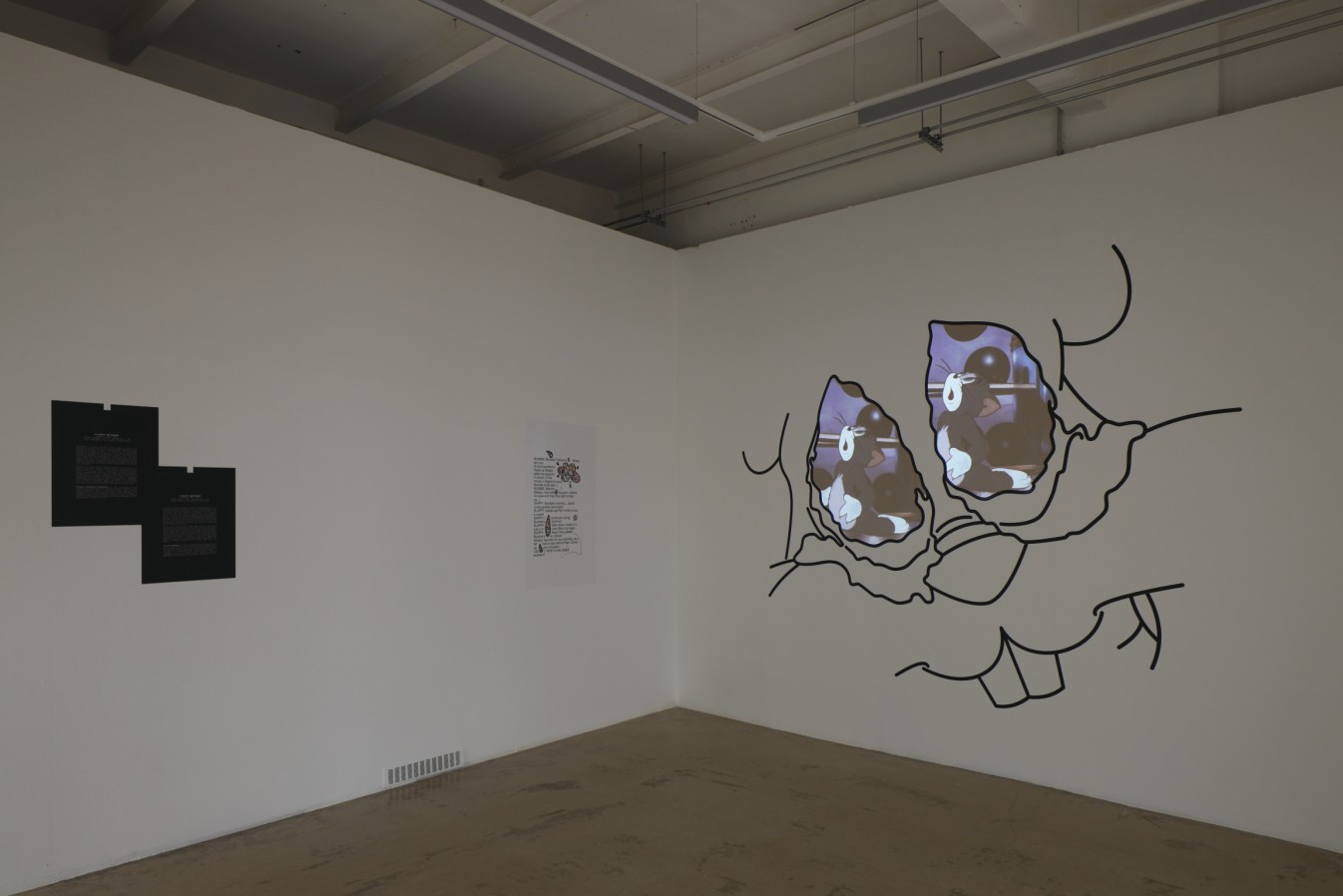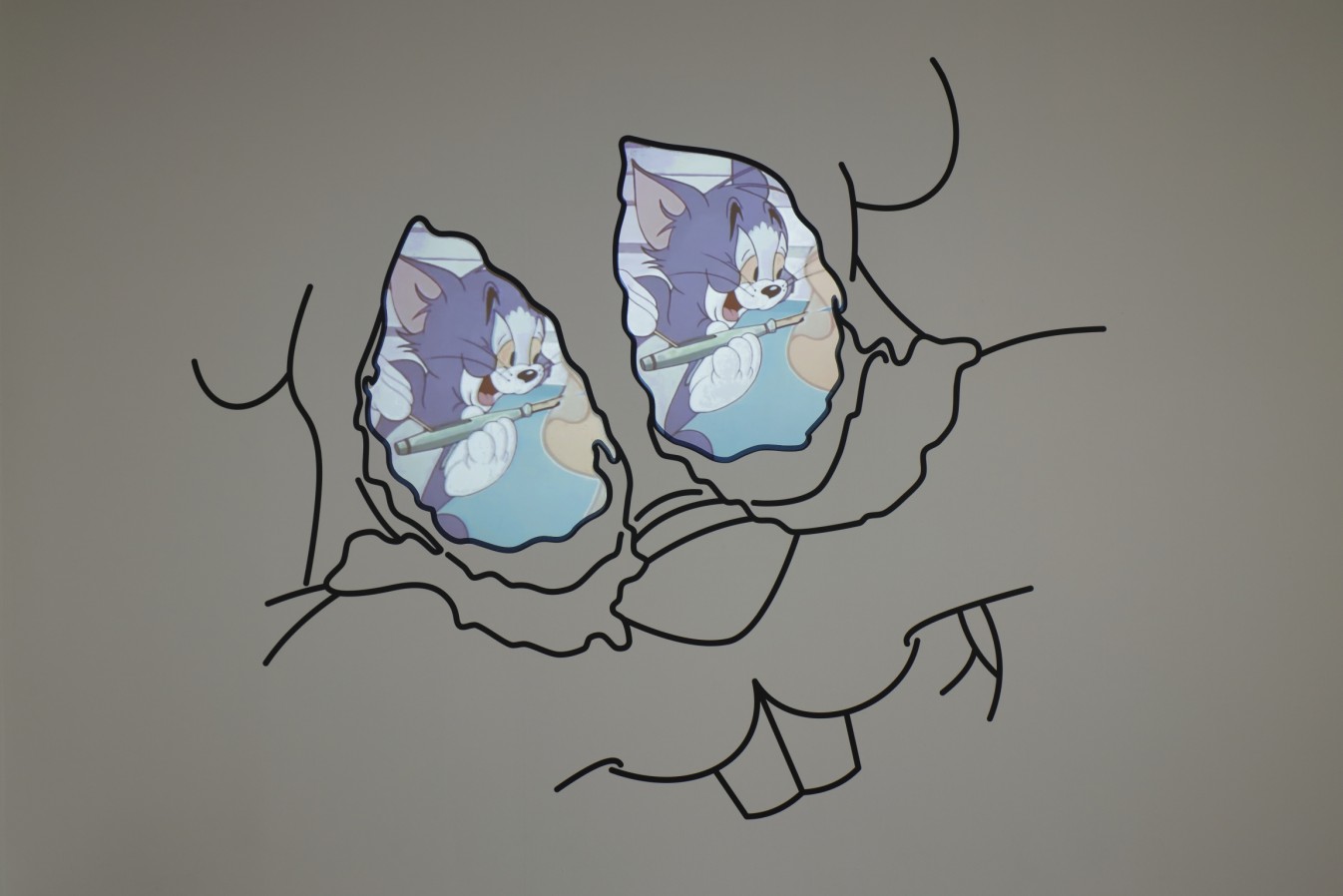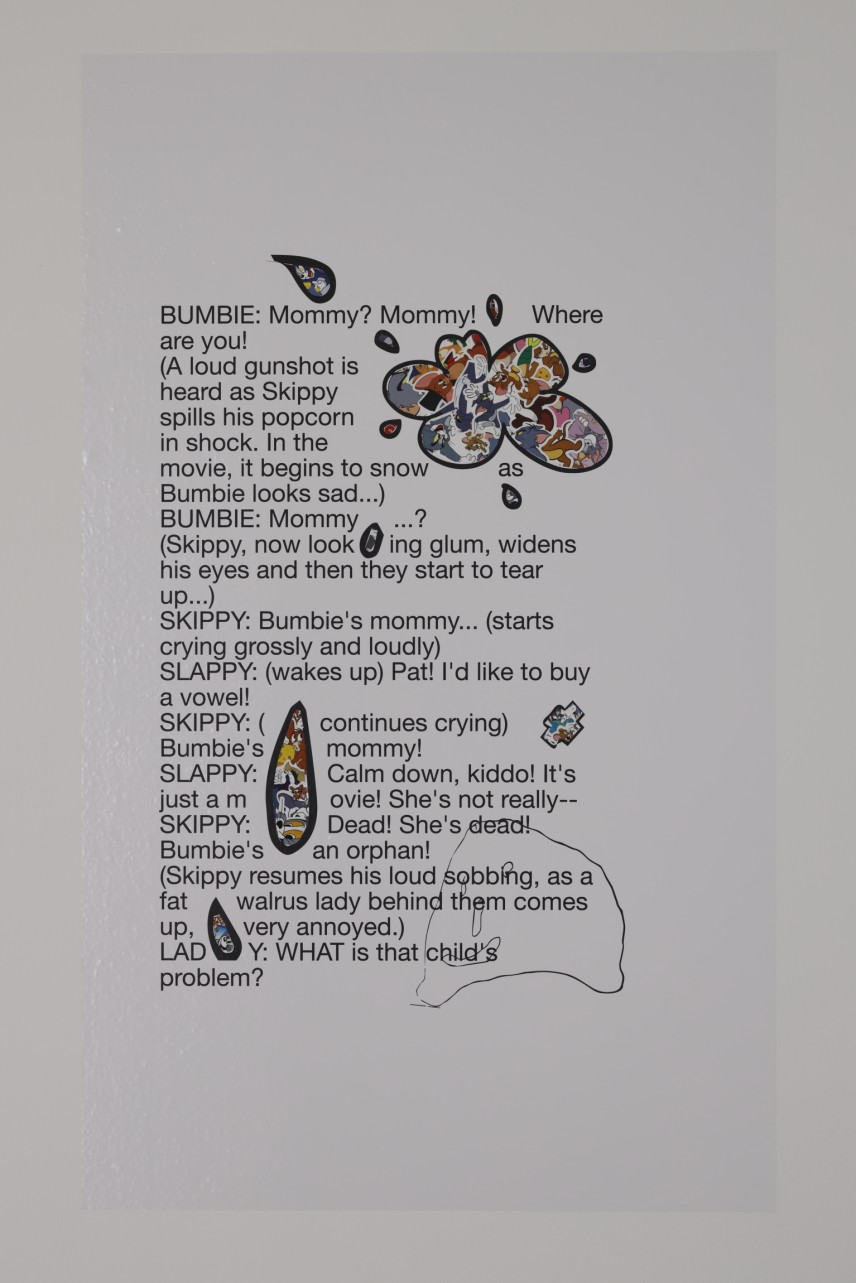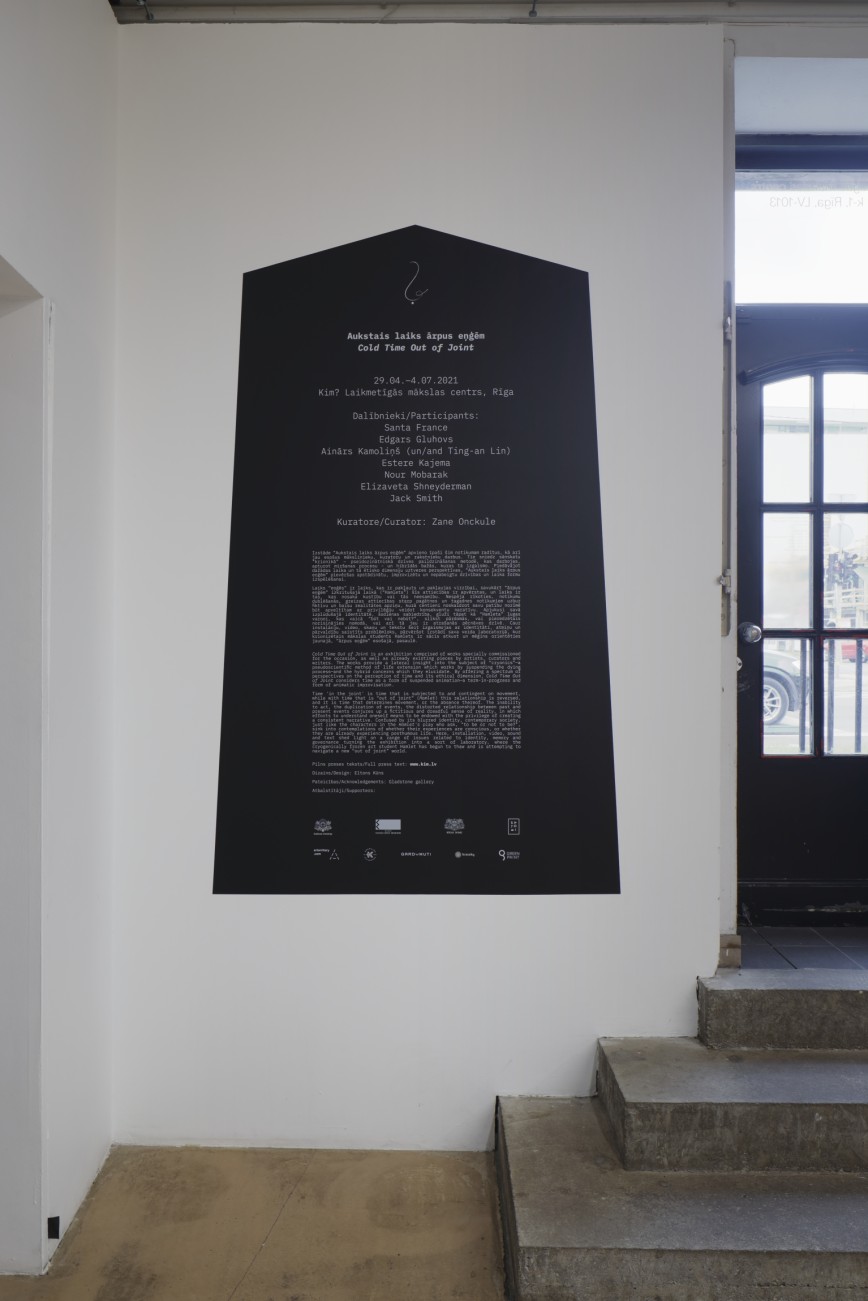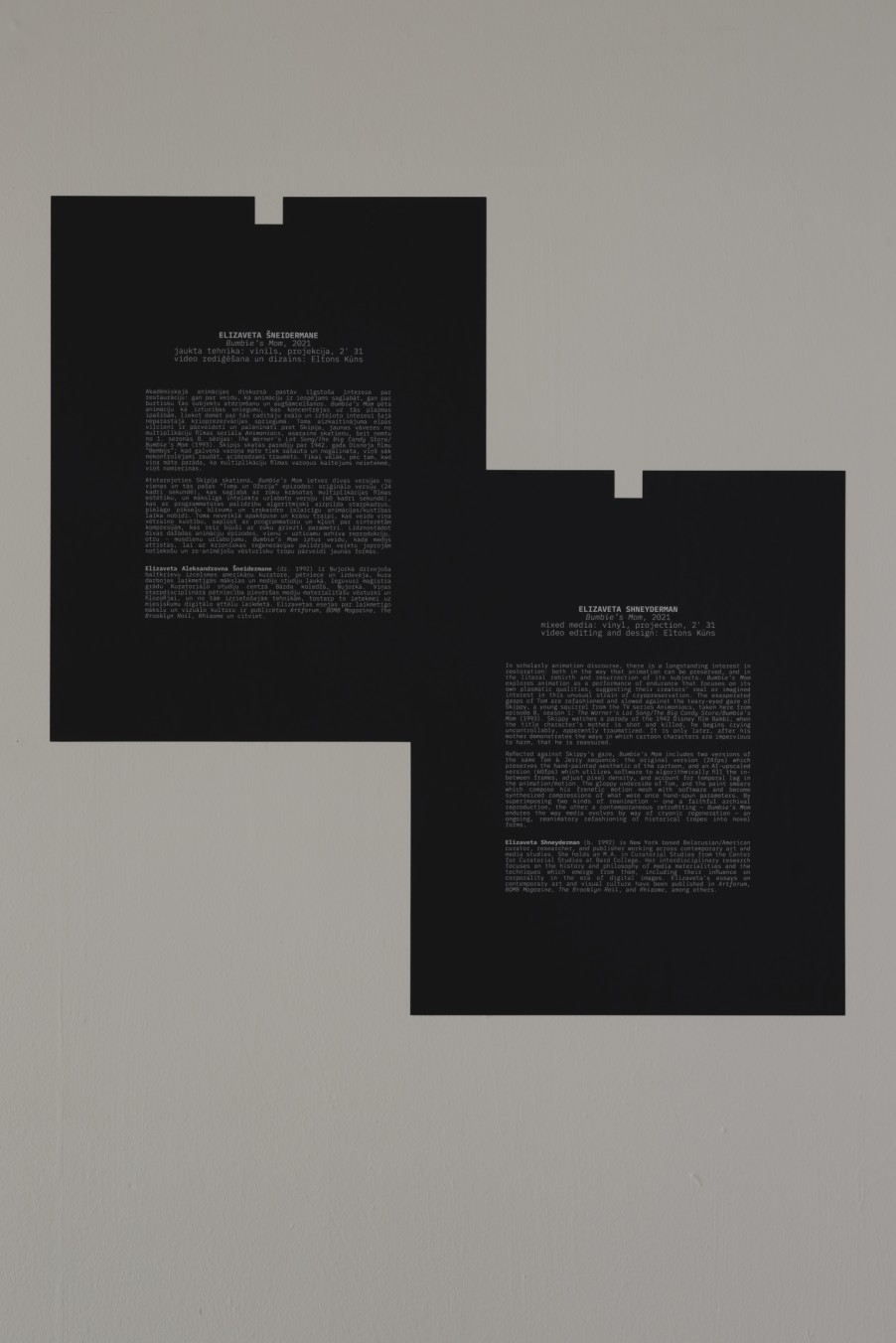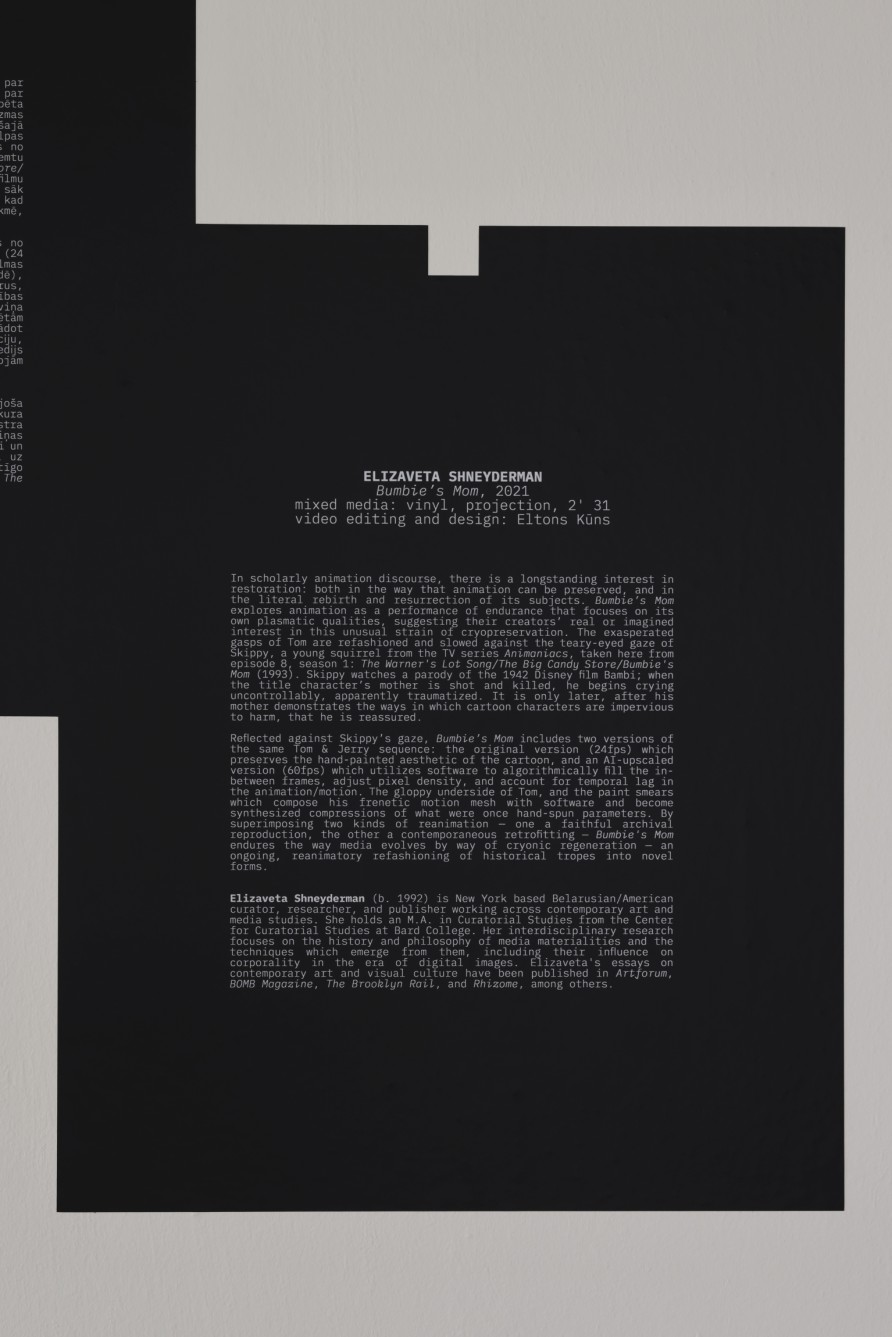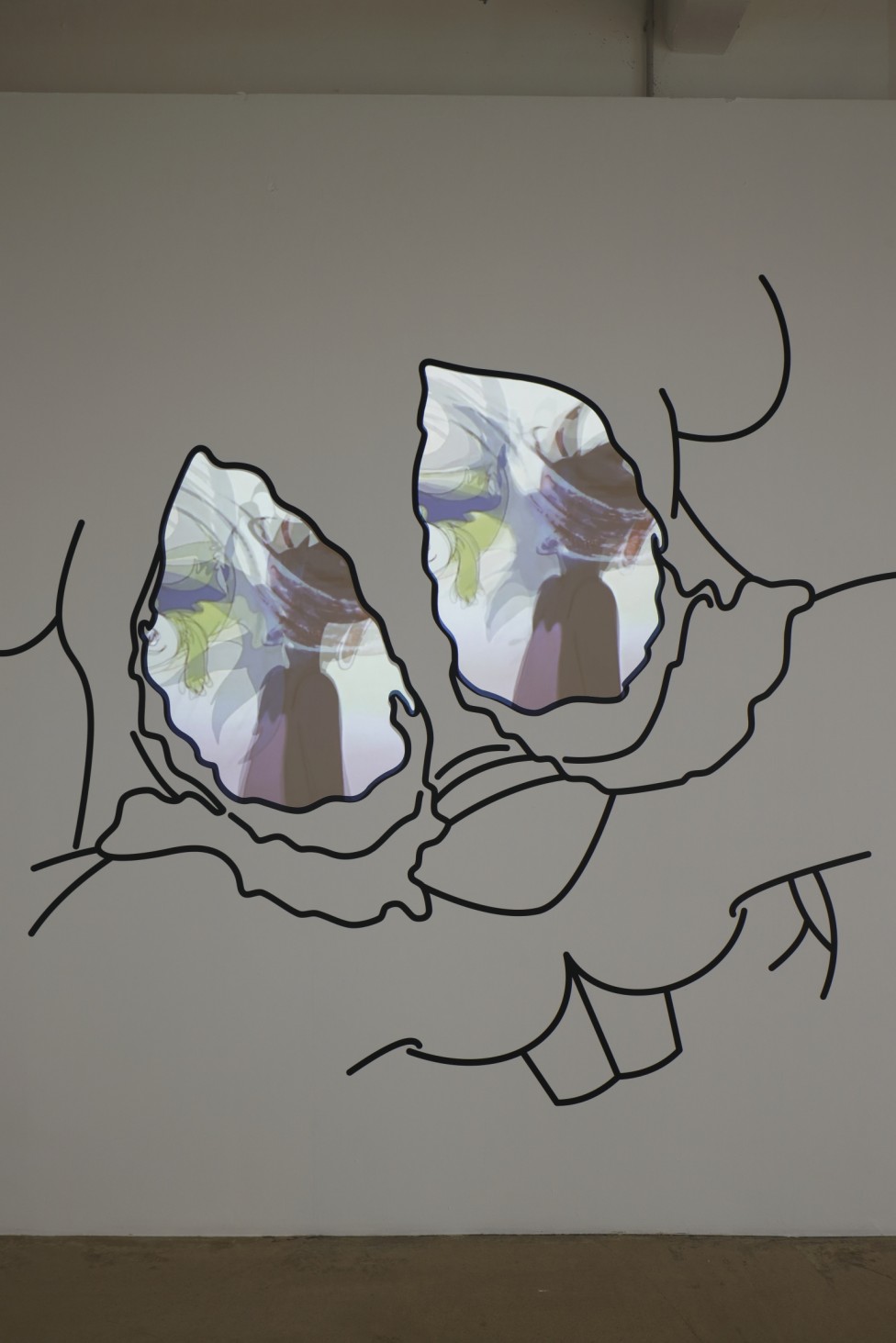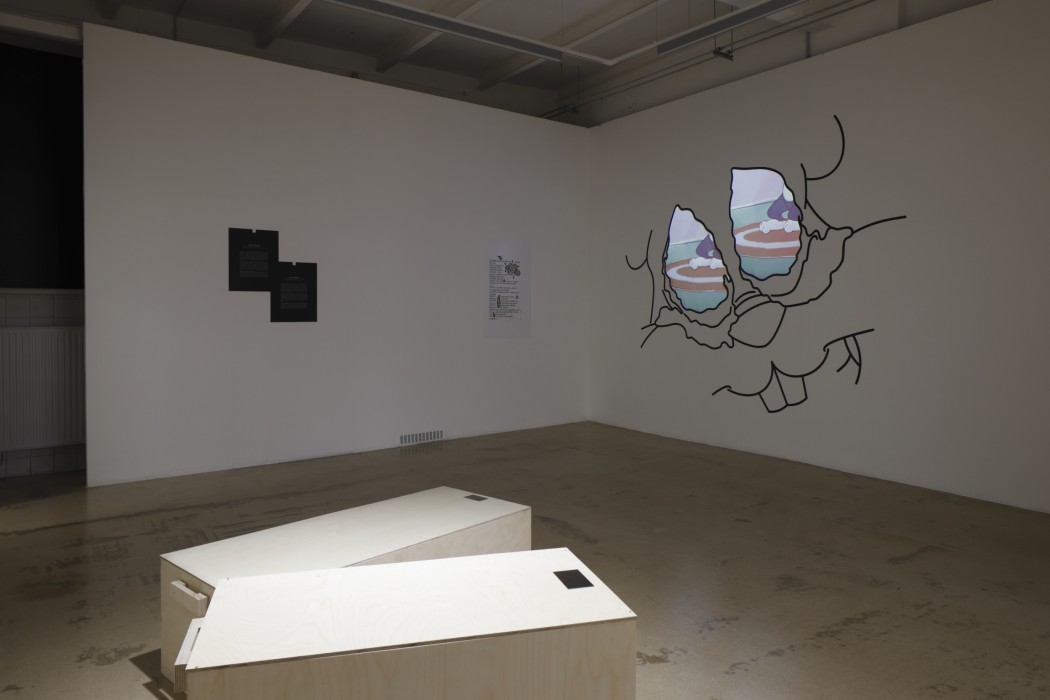Cold Time Out of Joint
April 29–July 4, 2021
Participants: Santa France, Edgars Gluhovs, Ainārs Kamoliņš (and Ting-an Lin), Estere Kajema, Nour Mobarak, Elizaveta Shneyderman, Jack Smith
Curator: Zane Onckule
Press:
Cold Time Out of Joint is an exhibition comprised of works specially commissioned for the occasion, as well as already existing pieces by artists, curators and writers. The works provide a lateral insight into the subject of “cryonics”—a pseudoscientific method of life extension which works by suspending the dying process—and the hybrid concerns which they elucidate. By offering a spectrum of perspectives on the perception of time and its ethical dimension, Cold Time Out of Joint considers time as a form of suspended animation—a term-in-progress and form of animatic improvisation.
Time ‘in the joint’ is time that is subjected to and contingent on movement, while with time that is “out of joint” (Hamlet) this relationship is reversed, and it is time that determines movement, or the absence thereof. The inability to act, the duplication of events, the distorted relationship between past and present events conjures up a fictitious and dreadful sense of reality, in which efforts to understand oneself means to be endowed with the privilege of creating a consistent narrative. Confused by its blurred identity, contemporary society, just like the characters in the Hamlet’s play who ask, “to be or not to be?”, sink into contemplations of whether their experiences are conscious, or whether they are already experiencing posthumous life. Here, installation, video, sound and text shed light on a range of issues related to identity, memory and governance turning the exhibition into a sort of laboratory, where the cryogenically frozen art student Hamlet has begun to thaw and is attempting to navigate a new “out of joint” world.
While Hamlet tries to verify his memories by observing others’ reactions, the exhibition’s spectral body is revealed in the following scenes: in a figurative composition of typical Latvian cemetery culture – a retro-futuristic feast for ancestral souls (Santa France) in the form of a downloadable hologram; in an installation stored in sealed freight containers, from which any visual signs of the artist’s (Edgars Gluhovs) previous exhibition in the same space have been removed; Hamlet as a police state in a newly created text (Ainārs Kamoliņš) providing instructions for how to create confusion (due to incomplete information) and how to maintain the accompanying doubts about the justifications for the right course of action; in a video essay (Estere Kajema) of a hauntology wrapped in sadness, where pop culture ghosts act as doormen allowing phantoms to slip out of their inhospitable dwellings in a late capitalist world; in associatively playing out the spirit of Hamlet’s father as a hallucination through an emotionally charged audio piece (Nour Mobarak) recorded in a nursing home, shower, car and elsewhere and which broadcasts conversations with the polyglot father, who has a 30-second thought and memory span due to a neurological anomaly; in an installation, (Elizaveta Shneyderman) the ongoing and re-animated historical tropes—progenitors of early animation and outcasts of the blockbuster Disney enterprise—are transformed into new forms, reborn and resurrected using cryonic regeneration; and finally, in a mural containing fragments of drawings from the set design of an adaptation of Hamlet (Jack Smith) that highlight the concept of “landlordism” as “the central social evil of our time” or magic, paying an offering in exchange for protection so as to be left alone.
Design: Eltons Kūns
Acknowledgements: Gladstone gallery
Supporters: Ministry of Culture, State Culture Capital Foundation, Riga City Council, KRASSKY, Satori, Arterritory.com, Green Print, Kokmuižas alus, Gardu muti
